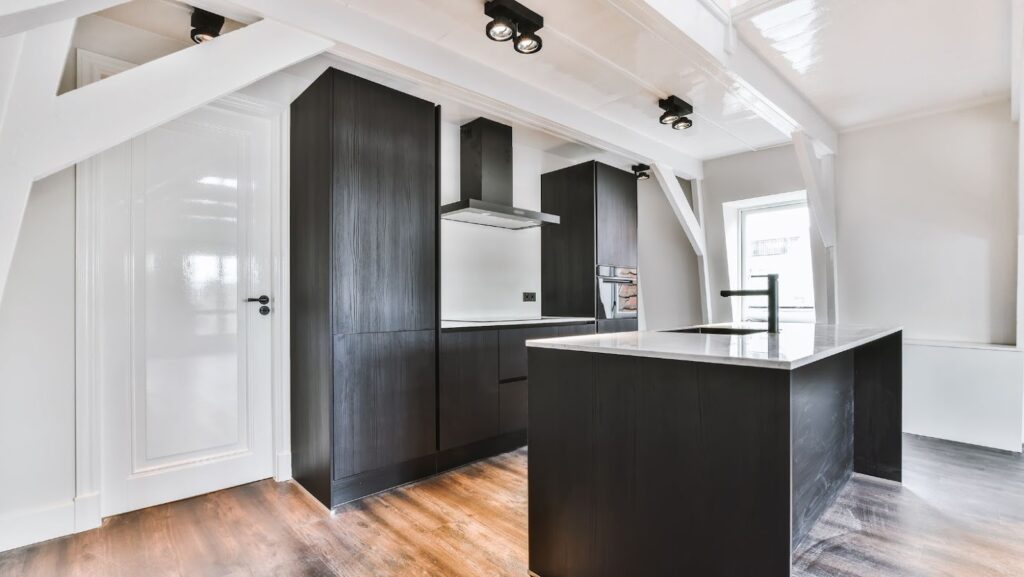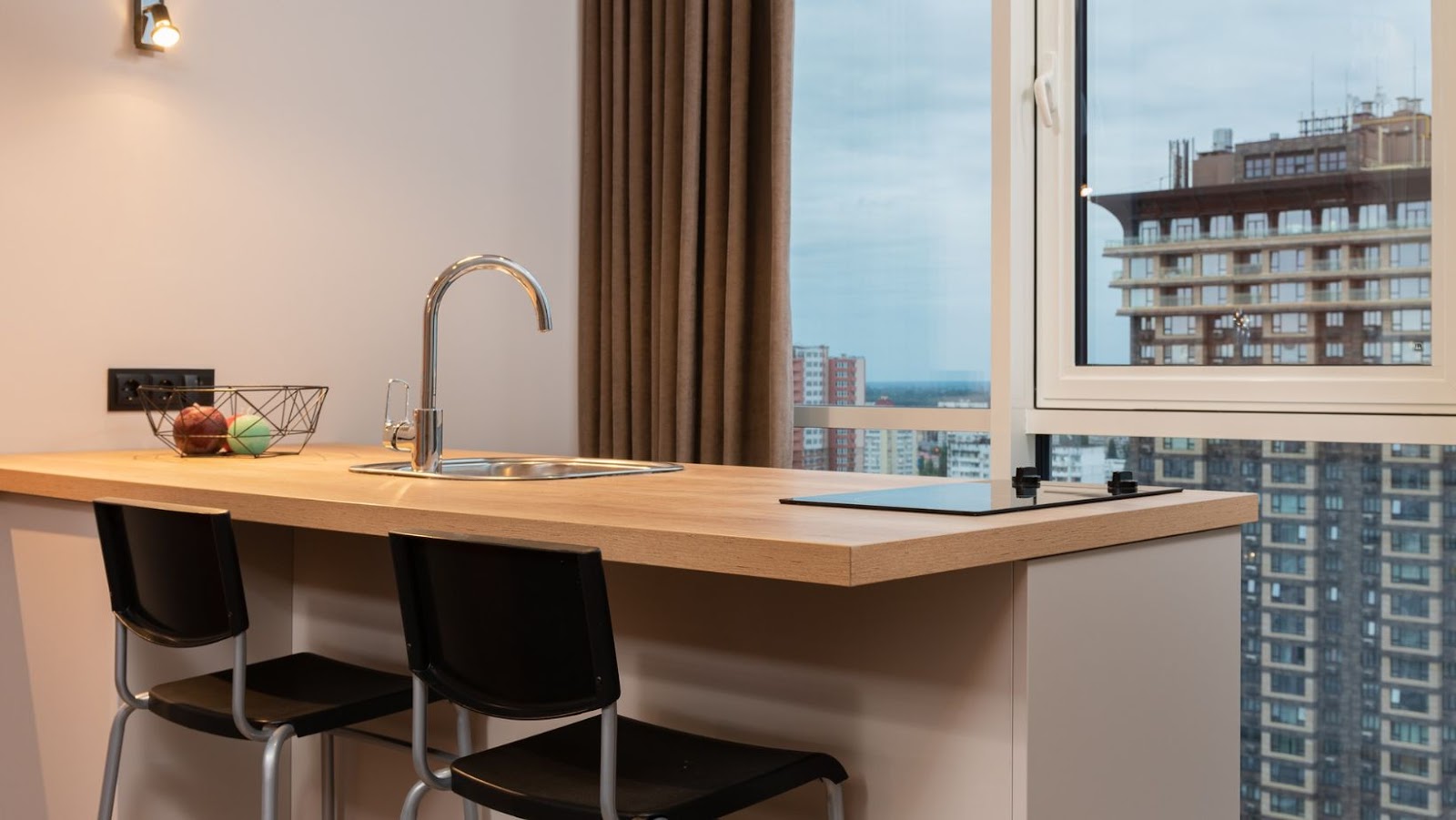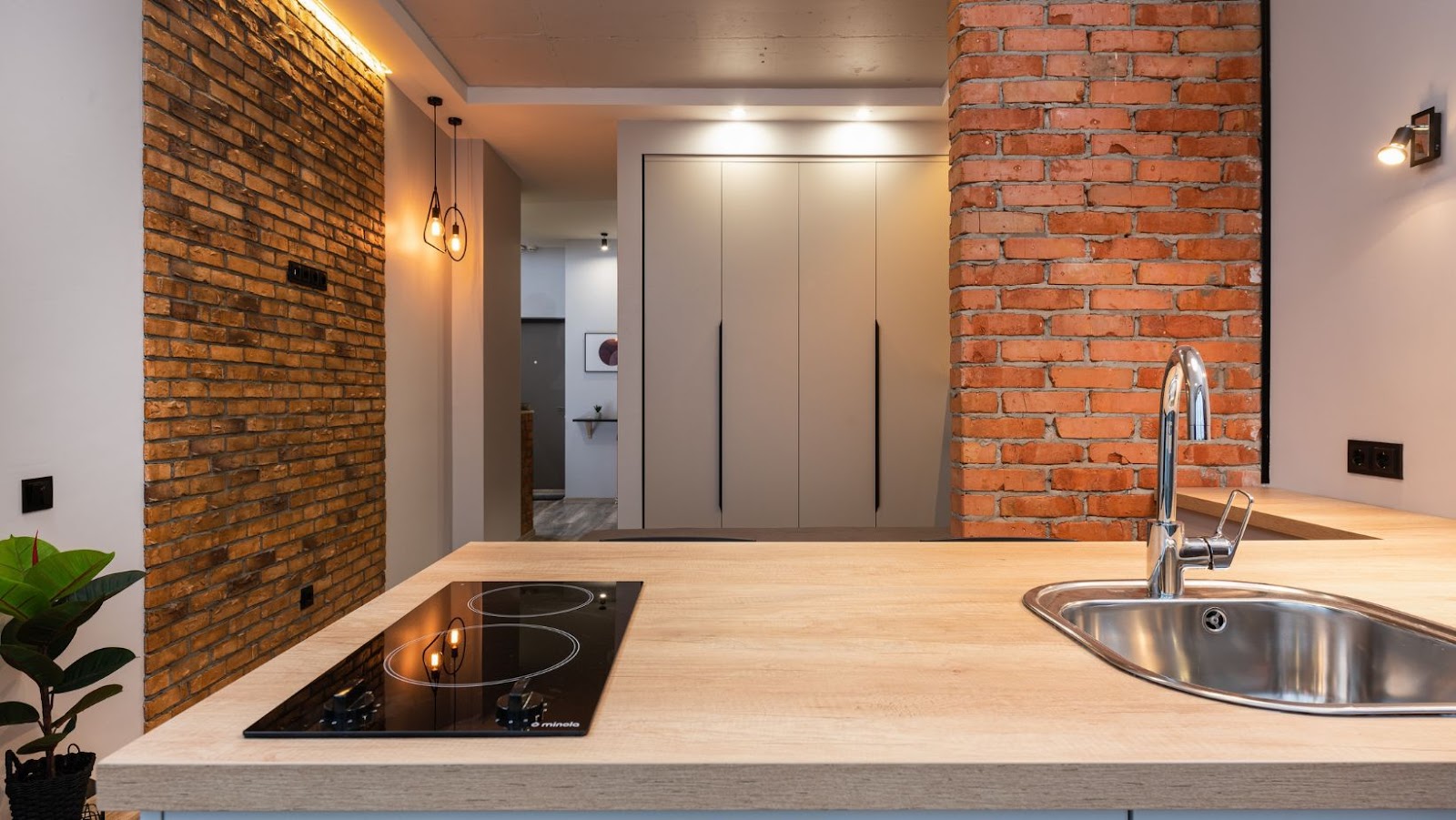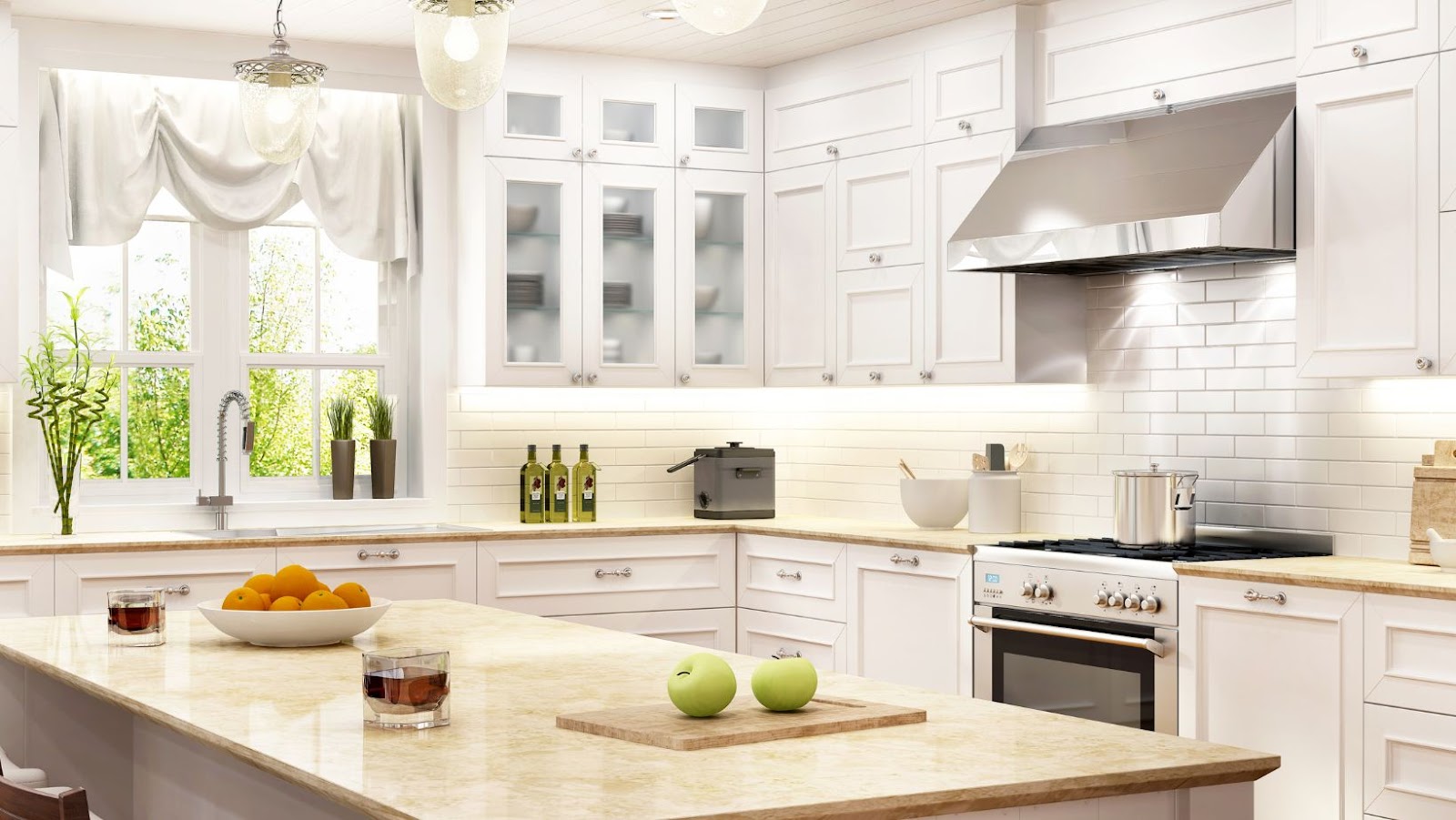Find a Kitchen Island that Fits your Budget.
 Finding a kitchen island that fits your budget can be easy with these tips! Start by determining your budget for the kitchen island and what features you want. Look for pre-built kitchen islands that fit your budget or consider building one yourself to save money.
Finding a kitchen island that fits your budget can be easy with these tips! Start by determining your budget for the kitchen island and what features you want. Look for pre-built kitchen islands that fit your budget or consider building one yourself to save money.
How to Install Kitchen Island
Once you have your kitchen island, it’s time to install it. Here’s how:
1. Find the perfect spot for your kitchen island and measure the space to ensure the island will fit there.
2. Assemble your kitchen island according to the manufacturer’s instructions, or if you’ve built it yourself, following your building instructions.
3. Move the island to the desired location and secure it to the floor using brackets or screws.
4. Connect any electrical or plumbing attachments if needed.
And voila, you have a new kitchen island that fits your budget!
Determining the Right Size and Layout for Your Kitchen
When it comes to finding the right kitchen island for your home, it’s important to consider factors such as size, layout, and budget.
The size and layout of your kitchen will have a major impact on how you install the kitchen island. Identifying the right size and layout for your kitchen is an essential step in finding the perfect island that fits your budget.
Assess your Kitchen Space for the Right Island Size
When installing a kitchen island, it’s essential to assess your kitchen space and determine the right island size for your needs.
Here are the steps to follow to help you find the perfect island size and layout for your kitchen:
Measure your kitchen space: Use a measuring tape to determine the length and width of your kitchen. This will help you decide how large your island can be while still leaving enough space for movement.
Determine your island’s purpose: Decide what you’ll be using your island for – cooking, storage, or a combination of both. This will help you determine the size and layout needed to accommodate your needs.
Consider the flow of traffic: Ensure that there’s enough space to move around the island and that the flow of traffic isn’t disrupted.
Find an island that fits your budget: Look for a kitchen island that fits your budget and meets your functional needs.
Remember to measure the height of the island as well to ensure it fits comfortably in your kitchen.
Decide on the Layout of Your Island
When it comes to determining the right size and layout for your kitchen island, there are a few things you need to consider. First, decide on the purpose of your island. Is it for cooking, prep work, dining, or storage? Knowing this will help you determine the ideal size and layout.
Once you have identified the purpose of your island, measure your kitchen to ensure that your island will fit and leave enough space for traffic flow. The ideal distance between the island and other kitchen countertops should be at least three feet.
You can install a kitchen island on a budget by using a prefabricated island or repurposing an old piece of furniture. Just make sure it is sturdy and functional for your needs.
When it comes to layout, consider the work triangle between your island, sink, and stove. A U-shaped or L-shaped layout may work best for your kitchen, depending on the available space.

Determining the size and layout of your kitchen island is crucial to its functionality and usefulness in your kitchen. With careful planning, you can create a beautiful and practical addition to your home.
Plan for Adequate Clearance Around the Island
Installing a kitchen island can be a great way to add functionality and style to your kitchen. It is important to ensure adequate clearance around the island, so that it both looks and functions well in your space.
Here are the steps to determine the right size and layout for your kitchen island:
1. Measure the length, width, and height of the kitchen and determine the maximum size of the island that will fit comfortably.
2. Plan for adequate space around the island. Allow for at least 3 feet of clearance on all sides, to ensure that there is enough room for people to move around comfortably.
3. Consider the intended use of the island. If it is designed to be used primarily for food preparation, you may want to include a sink or a cooktop in the island.
4. Determine the budget for the kitchen island and choose materials and features accordingly.
Pro tip: Before installing a kitchen island, experiment with a movable island or a makeshift island to determine what size and layout will work best for your kitchen.
Materials and Types of Kitchen Islands
Before shopping for a kitchen island, it is important to consider the materials and types of kitchen islands available. This will help you narrow down your choices and decide which type and material best suits your needs and budget.
Let’s take a look at the different materials and types of kitchen islands that are available and discuss how to install a kitchen island.
Different Types of Kitchen Islands
When it comes to kitchen islands, there are a variety of types and materials to choose from based on your budget, style, and functionality needs. The most basic kitchen island types include freestanding, portable, and fixed.
Freestanding islands are movable and can be repositioned often. Portable islands, as the name suggests, can easily be moved from one area to another, but are typically smaller in size. Fixed or built-in islands look and function more like a permanent part of your kitchen. They can also add significant value to your home.
Kitchen islands can be built using various materials such as wood, stainless steel, quartz, or granite. While wood can be more affordable, it requires regular maintenance. Stainless steel is a durable and hygienic material but can be noisy. Quartz is known for its strength and durability, while granite offers a non-porous surface that is easy to clean.
If you’re looking to install a kitchen island, understand your budget, style preference, and functionality needs before deciding on a type and material. Don’t forget to hire a professional if you need help with installation for the best results.
Materials to fit your Budget
Kitchen islands are a great way to add functional and aesthetic value to your kitchen space. While a kitchen island can be a costly investment, there are several materials and types of kitchen islands that can fit all budgets.
Here are some budget-friendly materials for building a kitchen island:
Plywood: Plywood is an affordable option for a kitchen island countertop. It is also durable and can be easily painted or stained to match your kitchen style.
Butcher block: Butcher block adds warmth to your kitchen and is a cost-effective countertop solution. It is also low maintenance and can be sanded and resealed as needed.
Stainless steel: Stainless steel is a sleek and affordable option for a kitchen island countertop. It is stain-resistant and easy to clean but can scratch easily.
Here are some types of kitchen islands that can fit your budget:
Portable kitchen islands: These islands are usually made of lightweight materials and can be easily moved around your kitchen. They are also relatively cheaper compared to built-in kitchen islands.
Kitchen carts: Kitchen carts are ideal for small kitchens and usually come with wheels for easy mobility. They are also affordable and can be used as a countertop or storage space.
Installing a kitchen island is straightforward and takes less time than you think. With the right tools and materials, you can install a kitchen island in a weekend. Pro tip: To save on your kitchen island, consider repurposing an old cabinet or dresser and add a countertop to transform it into a functional kitchen island.
Pros and Cons of Popular Materials
A kitchen island is a crucial feature in most modern kitchens, and selecting the right material for its construction is essential. Here are some pros and cons of the popular materials that you need to know before deciding on which one to choose.
1. Granite: It is a durable and heat-resistant material that gives a beautiful look to your kitchen island. However, it can be expensive and might require regular maintenance.
2. Wood: Wooden kitchen islands are aesthetically pleasing and come in various types of wood. They are relatively affordable, but they can easily scratch and damage with prolonged use.
3. Stainless Steel: Stainless steel gives your kitchen island a modern and sleek look that is perfect for the contemporary kitchen. It is easy to maintain, but it can be noisy and can dent if not handled with care.
4. Marble: Marble kitchen islands give your kitchen a luxurious and elegant look. But they require high maintenance as they are porous and prone to scratches, stains, and etchings.
Choose a material that fits within your budget and can offer you functional durability. Additionally, proper installation of the kitchen island will ensure its longevity and enhance the beauty of your kitchen. Pro-tip: Properly measure the kitchen space to ensure that the kitchen island fits and functions well in the intended space.
How to Install a Kitchen Island
Installing a kitchen island can be a great way to make your kitchen more functional and stylish. Kitchen islands add counter space and often extra storage, but they can also make a kitchen feel cramped.

Before you purchase a kitchen island, you’ll need to decide where you want to place it in your kitchen and what size will best fit in your space. In this article, we’ll look at how to install a kitchen island and some tips to consider when choosing one.
Tools and Materials Required
Installing a kitchen island can add functionality, storage, and value to your home. Before you start, make sure you have the right tools and materials on hand to complete the project:
Tools:
- Measuring tape
- Carpenter’s level
- Circular saw or jigsaw
- Cordless drill
- Screwdriver
- Pliers
- Adjustable wrench
- Hammer
- Putty knife
Materials:
- Kitchen island (choose one that fits your budget and kitchen style)
- Cabinets or shelves (optional)
- Countertop material (such as granite or butcher block)
- Screws and bolts
- Wood glue
- Wood shims
- Cabinet pulls or knobs
Having all the necessary tools and materials beforehand ensures a smooth installation process and a well-functioning kitchen island that meets your needs.
Prepare your Kitchen for Installation
Before installing a kitchen island, it’s important to prepare your kitchen to ensure a smooth and successful installation. Here are some tips to follow:
Measure the space: Measure the kitchen space where the island will be installed to ensure that it fits within the area and provides enough clearance around it for movement and accessibility.
Choose the design and size: Select a kitchen island design and size that fits your budget and kitchen requirements. Consider the materials, features, and functionality of the island to best suit your needs.
Remove any obstacles: Clear away any furniture, appliances, or fixtures that may block the path of the kitchen island and hinder the installation process.
Secure the flooring: Ensure that the kitchen floor is level and stable to provide a solid foundation for the island. If necessary, make any adjustments or repairs to the flooring before installing the island.
With these essential steps in mind, you can now begin the process of installing your kitchen island with confidence.
Step-by-Step Installation Guide
Installing a kitchen island is a great way to add style, storage, and functionality to your kitchen. Here’s a step-by-step installation guide to help you with the process:
Step 1: Select the right kitchen island. Choose one that fits your budget, style, and size requirements.
Step 2: Prepare the area where you plan to install the kitchen island. Clear any obstructions or clutter.
Step 3: Assemble the kitchen island according to the manufacturer’s instructions.
Step 4: Have a helper assist you in lifting the assembled island into position. Verify that the island is level and secure.
Step 5: Connect the plumbing and electrical work (if any) to the island.
Step 6: Add any finishing touches or customizations you desire, such as a new countertop or additional lighting.
With this installation guide, you can install a high-quality kitchen island efficiently and with ease.
Kitchen Island Design Ideas
When planning a kitchen island, there is much to consider. First, decide on the size and shape of the kitchen island. Then, consider the budget to make sure the chosen design fits within it. Select the materials and finishes, such as countertops and cabinets. Finally, decide on how to incorporate storage into the island.
Let’s look at a few design ideas to help you find a kitchen island that fits your budget.
Ideas for Functionality
Designing a kitchen island for functionality involves selecting a style that fits your budget and makes the most of the space you have. Here are some ideas to help you with the process:
Multi-Level Island: A multi-level island is a great way to separate your cooking and dining areas while still maintaining an open concept layout. The primary level can be used for food preparation and cooking, while the raised level acts as a casual dining area.
Storage Island: Cabinets, drawers, and shelving on your kitchen island can enhance the functionality of your space. Consider storing your pots and pans in a pull-out drawer, keeping your knives handy in a knife block, and adding hooks for hanging utensils.
Roll-Up Island: If you have limited space in your kitchen, a roll-up island can easily be stored when not in use. Just make sure to anchor it safely when in use.
Installing a Kitchen Island may seem a hassle, but it is a perfect way to create additional workspace, storage, and functionality. A professional can be hired to install it or you can do it on your own with proper tools and guidance.
Decorative Touches
Adding decorative touches to your kitchen island can enhance its aesthetic appeal and make it a focal point in your kitchen. Here are some ideas for customising your kitchen island design:
1. Install pendant lights overhead for a warm and inviting ambiance.
2. Add decorative corbels or legs to provide a more traditional look to your island.
3. Incorporate a built-in wine rack to store your favourite bottles of wine.
4. Invest in a stylish range hood to draw the eye upwards and give your island a more grandiose appearance.
5. Create additional storage by adding drawers or shelves in your island design to help keep your kitchen organised and tidy.
To install your kitchen island, you will need to measure the space, choose the right island size, and ensure that there is sufficient clearance around the island. Then, anchor the island to the floor and reinforce it with brackets and screws if necessary. Pro tip: Make sure to follow the manufacturer’s instructions carefully when installing your kitchen island to ensure a safe and sturdy installation.
Livening up your Kitchen Island with Paint or Other Finishes
Giving your kitchen island a fresh coat of paint or a new finish is a cost-effective way to liven up your kitchen space and create a stylish focal point.
Here are some ways to add colour and character to your kitchen island:
Paint: Choose a bold colour that compliments your kitchen’s colour scheme or opt for a neutral hue that will allow your island to blend in seamlessly with the rest of your decor. Pro Tip: Before painting your island, make sure to sand it down and prime it to ensure that the paint adheres properly.
Wood Stain: If your island is made of wood, consider staining it to enhance its natural grain and add warmth and depth to your kitchen. Joke: Remember to wear gloves and to remove any rings before applying the stain to avoid having ”stained” fingers.
Tile: Covering your island with tile is a stylish and unique way to add texture and colour to your kitchen. Choose a tile pattern that complements the overall look of your space. Fact: Installing a kitchen island can increase the value of your home.
No matter which finish you choose, make sure to apply a sealer to protect your island from scratches, stains, and water damage.






